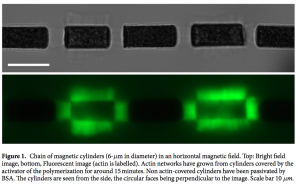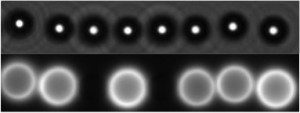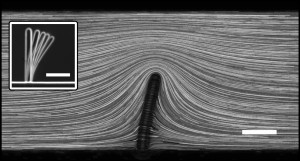Benjamin Marchetti, Veronica Raspa, Anke Lindner, Olivia du Roure, Laurence Bergougnoux, Elisabeth Guazzelli, and Camille Duprat
Physical Reviews Fluids 3, 104102 (Selected as Editor’s Suggestion)
The equilibrium state of a flexible fiber settling in a viscous fluid is examined using a combination of macroscopic experiments, numerical simulations, and scaling arguments. We identify three regimes having different signatures on this equilibrium configuration of the elastic filament: weak and large deformation regimes wherein the drag is proportional to the settling velocity as expected in Stokes flow and an intermediate elastic reconfiguration regime where the filament deforms to adopt a shape with a smaller drag which is no longer linearly proportional to the velocity.






 Home
Home